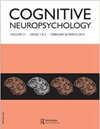沃德的框架对未来联觉研究的一些挑战和扩展。
IF 1.7
3区 心理学
Q2 PSYCHOLOGY
Cognitive Neuropsychology
Pub Date : 2021-05-01
Epub Date: 2021-12-27
DOI:10.1080/02643294.2021.2016670
引用次数: 0
摘要
本文章由计算机程序翻译,如有差异,请以英文原文为准。
Some challenges and extensions to Ward's framework for future synaesthesia research.
In his position paper on the future of synaesthesia research, Ward’s (2021) central argument is that the tendency to develop synaesthesia is just one consequence of a more general neurodevelopmental profile. He argues that the profile underlies many of the ways in which synaesthetes perform differently from controls in various mental tasks, even if there are still a few performance differences that are caused directly by synaesthesia. The profile impacts “lifestyle choices” such as careers. It is associated with an elevated tendency for autism and anxiety. Ward summarizes empirical evidence which suggests that this profile is shared by non-synaesthete nearrelatives and appears strongest in those synaesthetes who experience many synaesthetic variants. These claims bring together much of the recent empirical work on synaesthesia and set out a useful scientific agenda. Ward’s introduction emphasizes three points: (1) Synaesthesia is dichotomous – i.e., the presence versus absence of synaesthesia in any individual is bimodally distributed. You have it or you don’t, and there is no gradation. (2) Synaesthesia arises in a manner that is “probabilistic rather than deterministic”. (3) Research should be less concerned with synaesthesia itself, and more focused on the underlying neurodevelopmental profile. Here I present some challenges or extensions to these points (Italicized text in quotes is verbatim text from Ward’s paper.)
求助全文
通过发布文献求助,成功后即可免费获取论文全文。
去求助
来源期刊

Cognitive Neuropsychology
医学-心理学
CiteScore
5.50
自引率
11.80%
发文量
23
审稿时长
>12 weeks
期刊介绍:
Cognitive Neuropsychology is of interest to cognitive scientists and neuroscientists, neuropsychologists, neurologists, psycholinguists, speech pathologists, physiotherapists, and psychiatrists.
 求助内容:
求助内容: 应助结果提醒方式:
应助结果提醒方式:


